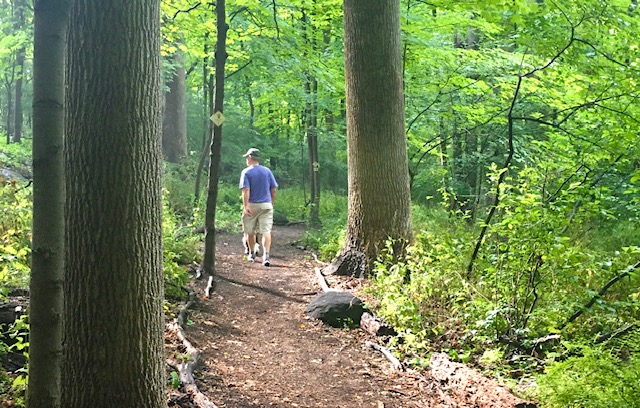
The Oenoke Lane GreenLink Trail connects a six-acre woodland preserve with a downtown neighborhood.
Nature preserves protect our biodiversity by supporting intricate food webs and providing sanctuary for birds, pollinators and all kinds of wildlife. Unfortunately, they are often islands amidst a sea of human activity and development. As isolated pockets, they can only go so far towards sustaining the health and genetic diversity of individual species. How private landowners steward their own properties can make a big difference in safeguarding species and our threatened environment.
Consider the bobcat, once rarely seen in pastoral New Canaan and viewed multiple times over the past few months, making the rounds through the western part of town. Bobcats are primarily a woodland species with a wide territory in which they travel between two and seven miles a day in search of food. The west side of town offers several green spaces amenable for such wandering: from the Laurel and Stamford Reservoirs along the Rippowam River to large swaths of open land owned by the Glass House, Country School, the Town of New Canaan (behind West School) and NCLT’s sanctuaries at Colhoun, Livingston Higley and Watson Symington. While these properties are not contiguous, they are connected by numerous private properties which serve as wildlife corridors.
Connecting our green space preserves and parks through wildlife corridors and pollinator pathways is key to sustaining robust natural habitats in our community. Wildlife is constantly on the move. Birds are the most obvious travelers, but foxes, otters, weasels, black bears, and bobcats wander far and wide to find food, mates, and ideal denning spots. Box turtles, who live on land, range between 2 to 10 acres and may roam farther to find a mate. While female butterflies can find nectar in most home gardens, they may need to travel across town to locate a species-specific host plant where they can lay their eggs. These are just a few examples of how backyard sanctuaries can boost wildlife habitats.
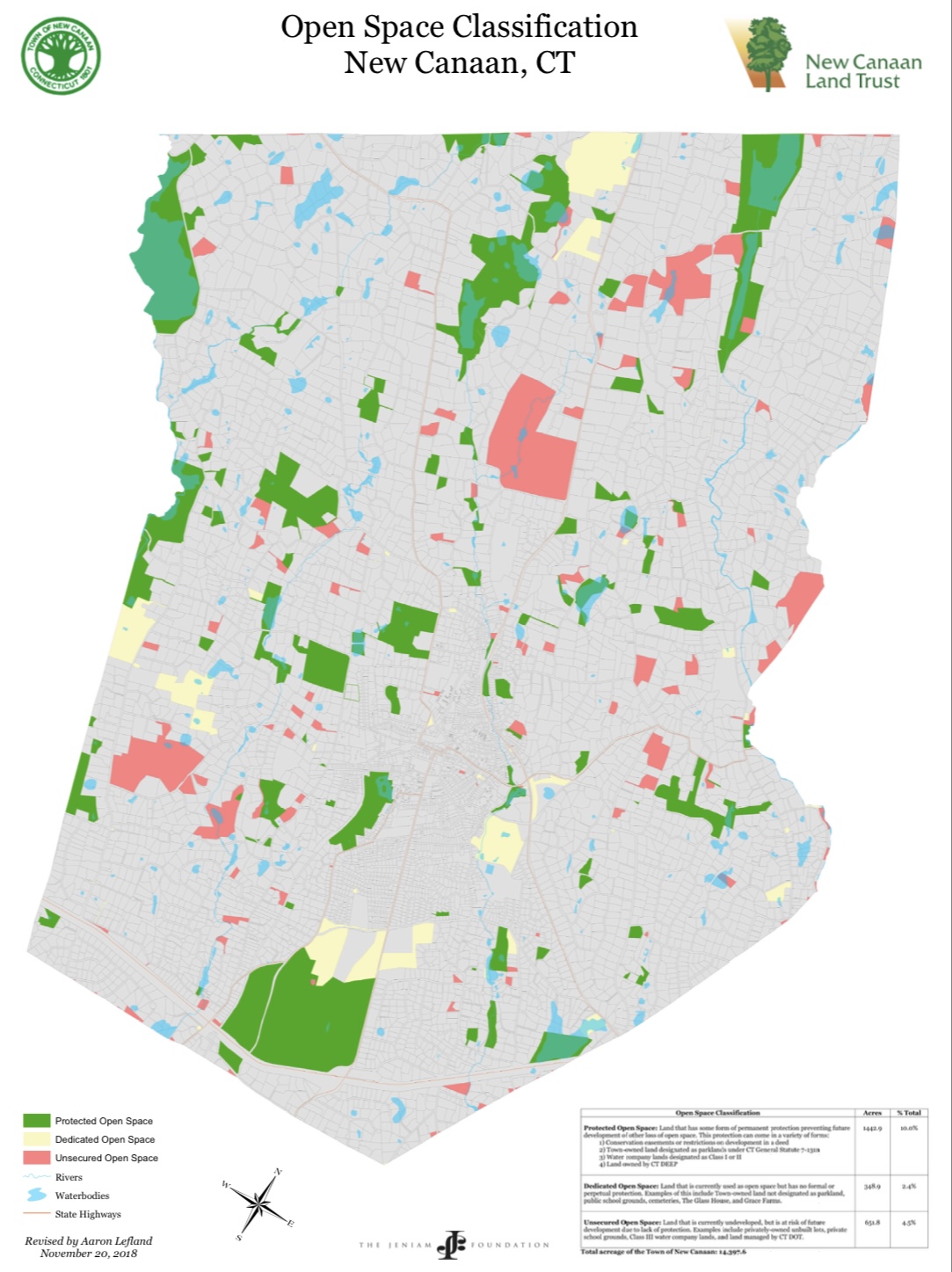
The map above, created by the New Cannan Conservation Commission in 2018, denotes tracts of open space across town. The properties are color coded: green indicates protected open space; yellow indicates dedicated open space and red indicates unsecured open space. These various types of open spaces are scattered all over town. Private landowners can help connect these fragmented preserves by designating their own backyards as sanctuaries. Visualize, if you will, individual ‘sanctuary’ yards as pieces of a jigsaw puzzle. When all the pieces fit together, they create a broad eco-friendly community for people and nature.
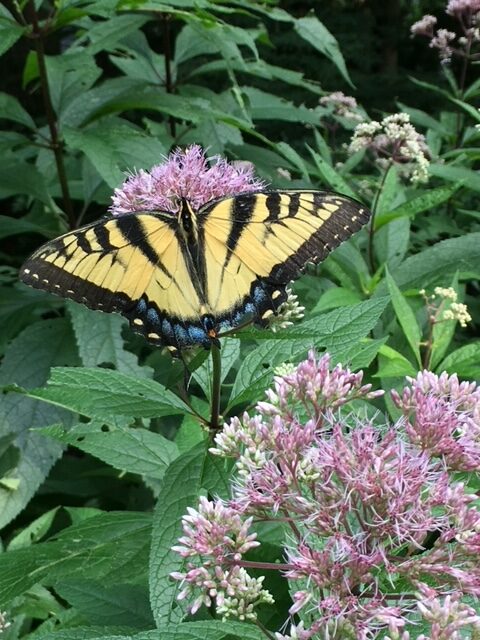
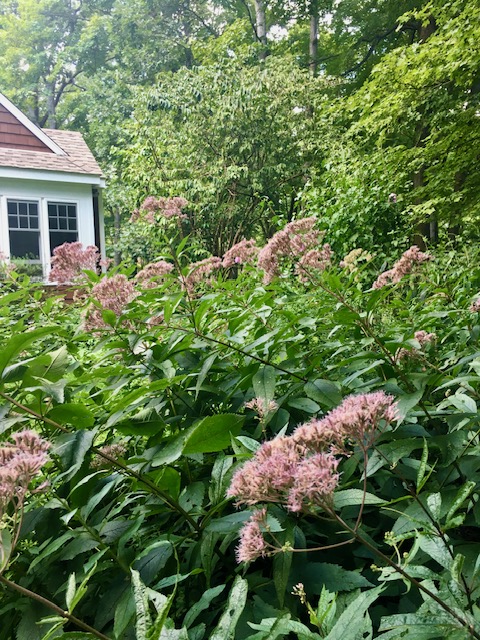
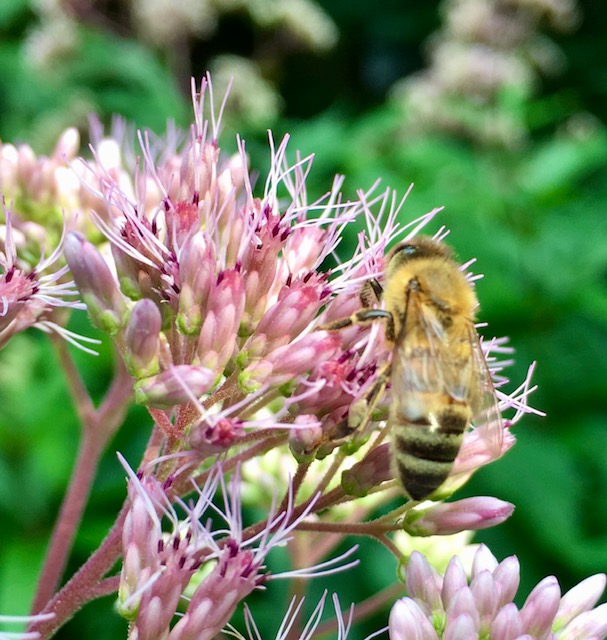

A patch of Joe Pye Weed in a private garden attracts bees, butterflies, and birds
There are many ways to practice land conservation at home. Here are some suggestions on how to create a backyard habitat. The first step is to take stock of what is already present and then consider how to improve or enhance your land stewardship practices. It is not necessary to tackle everything at once. Even small steps can make a difference.
- Protect and appreciate native trees, especially oaks, hickories, beech, and maple, which are invaluable to wildlife
- Leave snags (dead trees) standing and fallen trees where they lay whenever possible (they continue to support life as they decompose)
- Add native shrubs, perennials, and grasses which are the foundation of our food webs
- Convert turf lawns (all or part) to native ground covers and grasses that require less water and care
- Minimize the use of non-organic fertilizer, weed killers, and especially pesticides which kill indiscriminately
- Turn off landscape lighting, which is detrimental to migrating birds, as well as fireflies, bats, moths, and other night flyers
- Do not fence your property, as it inhibits the movement of animals that need to range
- Support local, regional, and national conservation efforts
- Consider donating acreage to NCLT or placing a conservation easement on part of your property to ensure it will be protected in the future
It is said that it takes a village to raise a child. It also takes a village to create and sustain viable wildlife habitats.
Recent Comments